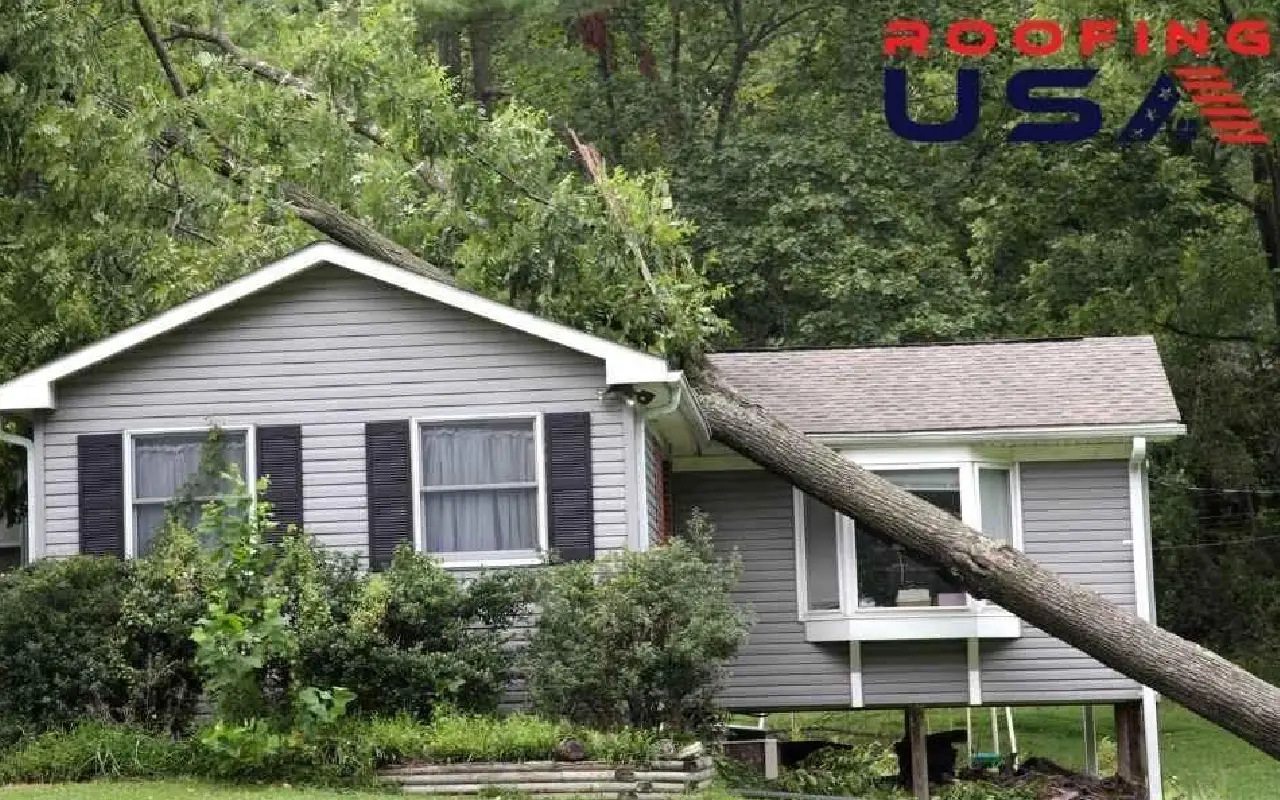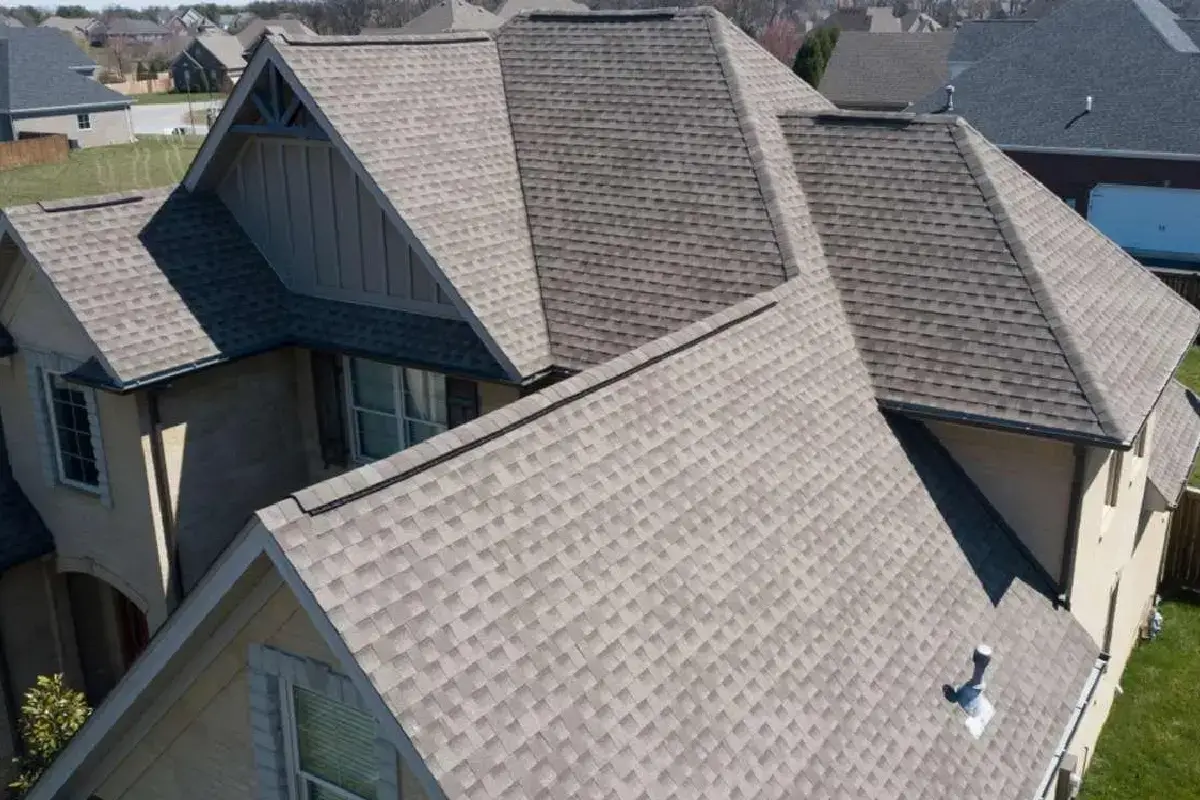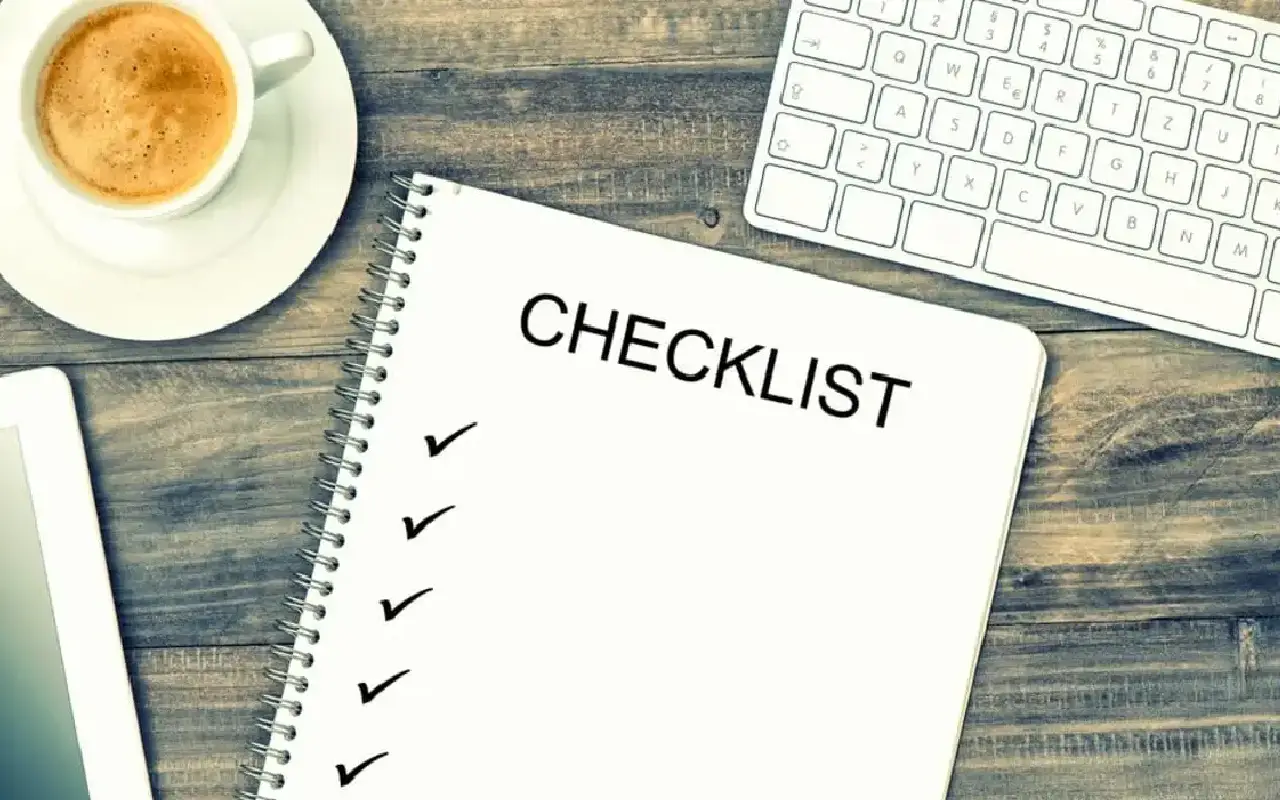When protecting your home, your roof is your first line of defense against the elements. With increasing storm activity in many areas, it’s more important than ever to make sure your roof is up to the task of withstanding any weather event that comes your way.
In this post, our team at Roofing USA will explore the preventive measures every homeowner should take to shield their roof from storm damage. From choosing the right roofing materials to preparing for an emergency, we’ve got you covered.
The Roofing Material Matters
Not all roofing materials are created equal. The type of material you choose for your roof can significantly impact its resistance to storm roof damage and overall longevity.
Roofing Materials
When it comes to residential roofing, there are several types of materials to consider for ensuring the longevity and durability of your entire roof against storm damage.
Some of the common roofing materials include:
- Metal roofing: Known for its exceptional durability and resistance to wind and hail damage, metal roofing offers long-lasting protection for your home.
- Asphalt shingles; Widely popular, asphalt shingles come in various quality levels. It is crucial to strike the right balance between cost and quality to maximize protection within your budget.
- Wood shakes: Providing a traditional and natural aesthetic, wood shakes offer decent resistance to wind and impact damage. However, regular maintenance is necessary to prevent issues like rot or mold.
- Slate tiles: With their elegant appearance and exceptional durability, slate tiles are a premium choice. They offer superior resistance to fire, wind, and impact damage, making them ideal for long-term protection.
- Clay or concrete tiles: These tiles provide a timeless and classic look to your roof. They are fire-resistant and offer excellent durability, but their weight may require extra structural support during installation.
- Synthetic materials: Synthetic roofing materials, such as polymer or composite shingles, replicate the appearance of other materials like wood or slate while offering enhanced durability and resistance to weather conditions.
Choosing the right roofing material involves considering climate, budget, and desired aesthetics. Consulting with a professional roofing contractor can help you make an informed decision for optimal protection and longevity.
Quality Vs. Cost
When contemplating the trade-off between quality and cost in choosing residential roofing materials, look beyond the initial price tag. While it can be tempting to opt for the least expensive option, remember that higher-quality materials often offer superior durability, longevity, and weather resistance, translating into long-term savings.
For example, while asphalt shingles might have a lower upfront cost, they typically have a shorter lifespan and may require more frequent replacements or repairs compared to more durable (and initially expensive) options like metal or slate roofing.
On the other hand, premium materials like slate tiles or clay/concrete tiles, though offering excellent durability and resistance, require a larger initial investment. The choice should, therefore, reflect a balance between quality and affordability, and critically, it should align with both your budget and your home’s long-term needs.
Investing in quality roofing upfront can result in fewer repairs, lower maintenance costs, and better overall protection for your home, proving economically advantageous over the lifespan of the roof.
Roof Inspection and Maintenance
Regular inspection and maintenance are the cornerstones of a long-lasting, storm-resistant roof. A routine check by a professional can detect early signs of roof damage or wear, allowing timely repairs that can prevent minor issues from escalating into major problems.
Routine Checks
Regular roof inspections help safeguard your home against potential damage before a storm strikes. By conducting thorough checks, you can identify any weak spots and address them promptly.
While you can perform some basic inspections yourself, it is highly recommended to engage the expertise of a professional roofing company in Columbia, SC. Their trained professionals can provide a comprehensive assessment of your roof’s condition, ensuring that any necessary maintenance or repairs are carried out to maintain its structural integrity.
This proactive approach will not only enhance the longevity of your roof but also provide you with peace of mind during inclement weather.
Professional Help
The importance of hiring professionals for roof maintenance cannot be overstated. Seasoned professionals bring their extensive experience and knowledge to the task at hand, spotting problems that might go unnoticed by the untrained eye.
While there’s an up-front cost associated with hiring professionals, the potential savings from averted repairs or replacements due to unchecked damage can far outweigh this initial investment.
Professional roofers are equipped to handle tasks such as replacing damaged shingles, repairing leaks, cleaning gutters, and other tasks that help maintain the structural integrity of your roof.
Regular maintenance by professional roofers will ensure your roof is always in optimal condition, ready to withstand the fury of any storm.

What Preventive Enhancements Can You Take?
Preventive enhancements involve making additions or modifications to your current roofing system to boost its overall resistance against storms.
These enhancements — ranging from installing roof clips and braces to adding a secondary water barrier — can significantly reduce the risk of costly damage during severe weather events.
Reinforcements
There are several preventive measures you can take to bolster your roof’s ability to withstand a storm.
One effective method is adding extra layers or structures, such as hurricane straps or a secondary water barrier. These reinforcements provide an additional level of support and enhance your roof’s overall strength, making it more resilient against strong winds and heavy rainfall during severe weather conditions.
Gutter Maintenance
Additionally, it is essential to keep your gutters clear and fully functional to effectively mitigate the risk of water damage during periods of heavy rainfall.
By ensuring that your gutters are free from debris and obstructions, you can redirect rainwater away from your property, safeguarding its structural integrity and preventing potential issues such as leaks, foundation damage, and erosion.
The Insurance and Warranties Involved
One aspect of safeguarding your roof from storm damage is understanding and managing your insurance and warranties. These financial tools offer critical protection and can significantly mitigate the costs associated with roof repairs or replacements due to storm damage.
Coverage Options
Understanding what is and isn’t covered in typical insurance policies is crucial when it comes to storm damage. While having insurance coverage can provide financial relief for repairs or replacements, it’s important to be aware of the limitations and exclusions of your policy.
For instance, some policies may cover wind damage, but not flood damage caused by the same storm. By familiarizing yourself with the details and fine print of your policy, you can take proactive measures to ensure adequate coverage and avoid any surprises when you need to file a claim. This may involve reviewing your policy with your insurance agent or seeking clarification on specific scenarios.
How to File an Insurance Claim
If you find yourself needing to file roofing insurance claims for storm damage, follow these steps to ensure a smooth process:
- Assess the damage: Take the time to document the damage. Capture clear photos or videos of the affected property or items, noting any relevant details.
- Review your policy: Familiarize yourself with your insurance policy to understand the coverage limits, deductibles, and any specific requirements or exclusions that may apply to your claim.
- Contact your insurance company: Reach out to your insurance provider to report the incident and initiate the claims process. They will guide you through the necessary steps and provide you with the appropriate forms or online tools to complete.
- Provide detailed information: Be ready to provide accurate and comprehensive information about the incident, including the date, time, and location of the event, a description of the damage, and any relevant supporting documents or evidence.
- Follow instructions: Carefully follow the instructions provided by your insurance company. This may include submitting forms, providing additional documentation, or arranging for an adjuster to assess the roof damage in person.
- Keep records: Maintain copies of all correspondence, forms, and documentation related to your claim. This will help you keep track of the progress and serve as evidence if any disputes arise.
- Cooperate with the claims process: Be responsive and cooperate with your insurance company throughout the claims process. Promptly provide any additional information or documentation they may request.
Each insurance company and policy may have specific requirements and variations in the claims process, so refer to your policy documents and communicate directly with your insurance provider for accurate guidance.
How to Be Prepared for an Emergency
In times of severe weather, having an emergency plan in place is crucial for the safety of the household. Prepare an emergency kit and identify a safe space in your home to take refuge during the storm.
Safety First
When a storm is imminent, ensuring the safety of your family and home becomes the top priority.
Start by creating a family emergency plan which outlines the steps to take during a storm. This plan should include a safe meeting point in your home, a list of emergency contacts, and any necessary evacuation routes. Communicate this plan to all family members.
Next, consider creating an emergency kit with essential items such as food, water, medication, flashlights, and batteries. Keep in mind that you may need to sustain your family for a few days if the storm results in prolonged power outages.
Additionally, secure your home by checking for loose objects outside that could pose a danger in high winds, and reinforce your windows and doors. If necessary, cover windows with storm shutters or plywood for added protection.
Finally, stay updated with weather forecasts and instructions from local authorities. Their advice will determine whether it’s safer to stay at home or evacuate.
What Should You Include in Emergency Kits?
An emergency kit is an integral part of your preparedness for severe weather conditions. As mentioned earlier, your kit should contain items that could sustain your family for a few days during prolonged power outages or if the storm disrupts access to services.
Your emergency kit should include:
- Water and food: Have at least one gallon of water per person per day for a minimum of three days. Also, pack a three-day supply of non-perishable food items for each person. Don’t forget to include a manual can opener for canned food.
- Medications: Include any prescription and non-prescription medications that are regularly used by your family members. A first-aid kit is also essential.
- Lighting: Pack flashlights and extra batteries. Avoid using candles as they can pose a fire hazard.
- Communication equipment: Battery-powered or hand crank radio and a NOAA Weather Radio with tone alert will keep you updated with weather forecasts and local news. Don’t forget to pack extra batteries.
- Important documents: Keep copies of your insurance policies, identification documents, and bank account records in a waterproof container. Also, include cash or traveler’s checks for emergencies.
- Personal hygiene and sanitation items: Wet wipes, garbage bags, and plastic ties can be used for personal sanitation. Include travel-size toiletries as well.
- Tools and supplies: A multi-function tool that can act as a knife, can opener, screwdriver, etc., is handy. Also, include matches in a waterproof container and a whistle to signal for help.
- Clothing and bedding: Pack a change of clothes for each person, including sturdy shoes and warm blankets.
- Special items: If you have infants, older adults, or pets in your family, remember to include essential items like baby food, diapers, pet food, or any specific medical equipment or supplies they may need.
Preparing a comprehensive emergency kit and maintaining it in a ready-to-use state can significantly enhance your family’s safety and comfort during a storm.

What To Do After A Storm Hits Your Home
After a storm has passed, assess your property for any potential damage. Prompt identification and repair of issues can prevent further damage and ensure the continued safety and integrity of your home.
Initial Assessment
Exercise caution and refrain from venturing onto your roof or coming into contact with any potentially hazardous electrical wires that may have been compromised. It is highly advisable to wait until a trained professional has thoroughly inspected and cleared the area, ensuring your well-being and mitigating any further risks.
Taking these precautionary measures will help ensure a safe and efficient evaluation of the situation, allowing for appropriate actions to be taken promptly.
Look for any visibly loose, missing, or damaged shingles, and observe if there are any sagging or compromised structures.
Next, check your attic or upper rooms for signs of leaks or water damage, including damp spots or streaks on the walls and ceiling. Also, inspect your surroundings for fallen branches or debris that may have damaged your roof.
However, a thorough and accurate evaluation is best done by a professional roofer. They are trained to identify subtle signs of roof damage that you may overlook, such as small leaks or hail damage. They can also safely navigate your roof and assess areas that may be unsafe or difficult for you to reach.
Repairs and Restorations
Don’t hesitate to contact a reputable roofing company in Columbia, SC like Roofing USA. Their experienced team can provide expert repairs or restoration services for your roof, ensuring that any existing damage is addressed promptly and effectively.
By taking proactive measures, you can prevent post-storm deterioration and protect your property from potential hazards. Trust the professionals to handle your roofing needs with care and precision.
Take Preventive Measures With the Help of the Best Roofing Company Columbia, SC Has to Offer
Taking preventive measures to protect your roof from storm damage is a wise investment in your home’s longevity and your family’s safety. With the right roofing materials, regular inspections and maintenance, preventive enhancements, insurance coverage, emergency preparedness, and post-storm actions, you can shield your roof from even the toughest storms.
Roofing USA is your reliable partner in mitigating roof damage to your roof. Our experienced team of professionals is well-equipped to handle a variety of roofing needs, from routine maintenance tasks to complex repair or replacement jobs.
We are committed to delivering high-quality work and exceptional customer service. With Roofing USA, you can be confident that your roof is in good hands, ready to weather any storm.
Contact us today if you’re interested in a roof repair or roof replacement.












